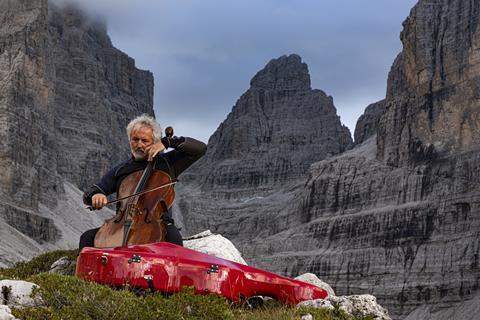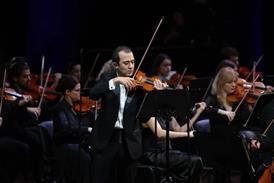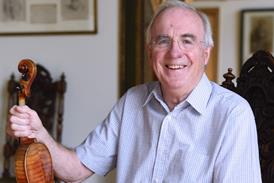Italian cellist Mario Brunello recalls the first time he performed Bach’s Sonatas and Partitas on the violoncello piccolo, and how the experience informed his understanding of the composer

Discover more Featured Stories like this in The Strad Playing Hub
Read more premium content for subscribers here
I was introduced to Bach from a very young age. My musical life began when I took up the guitar aged seven. My mother played records by Andrés Segovia to encourage me, which included a number of 78s of him playing excerpts of Bach’s Sonatas and Partitas, and Cello Suites. So when I picked up the cello, aged twelve, the natural thing was to start learning what I’d already studied on the guitar.
It was only about eight years ago that I started playing the complete Sonatas and Partitas on the four-string violoncello piccolo, a small-size version of the cello. At the time, I was the only person I knew who was playing all the Sonatas and Partitas on the instrument; in fact it was impossible to find an E string the right size for it, so I had to borrow one of my wife’s harp strings to make one of my own! I effectively transformed it into a bass violin, and began with the First Sonata in G minor. It was incredibly liberating to enter into this new world of polyphony; with every note I felt as though I was an explorer entering uncharted territory for the first time.
Listening to the Sonatas and Partitas on a violin, I had always wondered how they’d sound with more amplification and resonance – in other words, with the sound of a large instrument behind them. The fugues of the three Sonatas in particular have no equivalent in the cello repertoire: Britten’s Solo Cello Suites are somewhat similar but are much more complicated and intellectual than the pure music of Bach fugues – which, when I play them, I get the sense of having every expressive possibility laid out in front of me. Another interesting difference is that cellists naturally perform from the bass side up, as the right hand encounters the lower strings first. With the violin it’s the opposite, as the treble strings are closer to the bowing arm. So for cellists it’s more natural to start from the bass strings, which gives a completely different perspective on the music.
The first time I played the Fugue of the Third Sonata, it felt like a miracle. It’s divided into seven parts, which to me represent the days of the week. So every part of the fugue acts like a new day, with its own sunrise and sunset. It’s an epic construction which by the end leaves you feeling as if you’ve reached a new understanding of life. I also think each of the Sonata fugues have different characteristics. The first is instrumental, which takes me back to my time as a guitarist. The second is dance-like and recalls the allemandes and courantes of the Cello Suites, while the third is definitely vocal. It puts me in mind of a chorale, in which a full choir is singing in front of me, the conductor.
What fascinates me about the pieces is that I find something new in them every time I play them. I spend a lot of time in the Dolomites near my home, and to me it’s like looking at the mountains in different types of light, or just changing your perspective slightly to bring more peaks into view. Playing them each time enlarges your understanding and brings new possibilities into focus.
In fact, I’ve played the Sonatas and Partitas in the mountains many times. For the past 27 years I’ve organised the festival Sounds of the Dolomites, which brings audiences over 2,000 metres into the mountains for up to 30 open-air concerts. One year included a three-day trek with an audience of 50 people, in which I performed all the Sonatas and Partitas at different vantage points in the Dolomites. As I played, the outline of the mountains around me reminded me of a musical score, as if I was playing the skyline. It was one of the most extraordinary moments in my life as a musician, and one I can never forget.
INTERVIEW BY CHRISTIAN LLOYD
Read: Bach Solo Violin Sonatas: At heart a fugue
Read: ‘The objective was Bach, not Biondi’
Discover more Featured Stories like this in The Strad Playing Hub
Read more premium content for subscribers here




































No comments yet